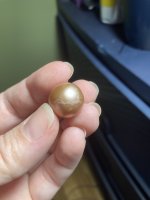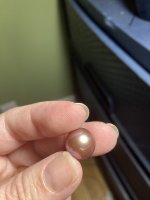GigglesOfDefeat
Member
- Joined
- Sep 27, 2024
- Messages
- 7
I recently purchased some Edison pearls after seeing live images of them to confirm any possible defects. At that time, they were unmarred, but when I received them I noticed what looks to be superficial scratches. This is most notable on my 16mm Edison. I say "superficial" because I can't actually feel anything or see any change in depth of the nacre. However, the color looks unnaturally removed. Can anyone tell me if this is something that can be buffed out or is this something that naturally occurs in pearls? Did I mention these are my very first pearls? I'm looking forward to everyone's advice.




